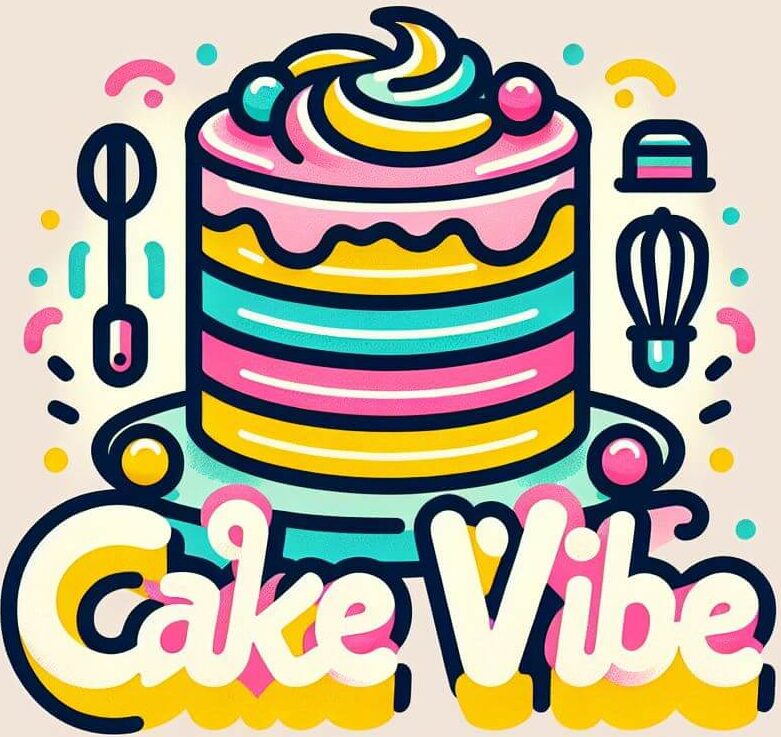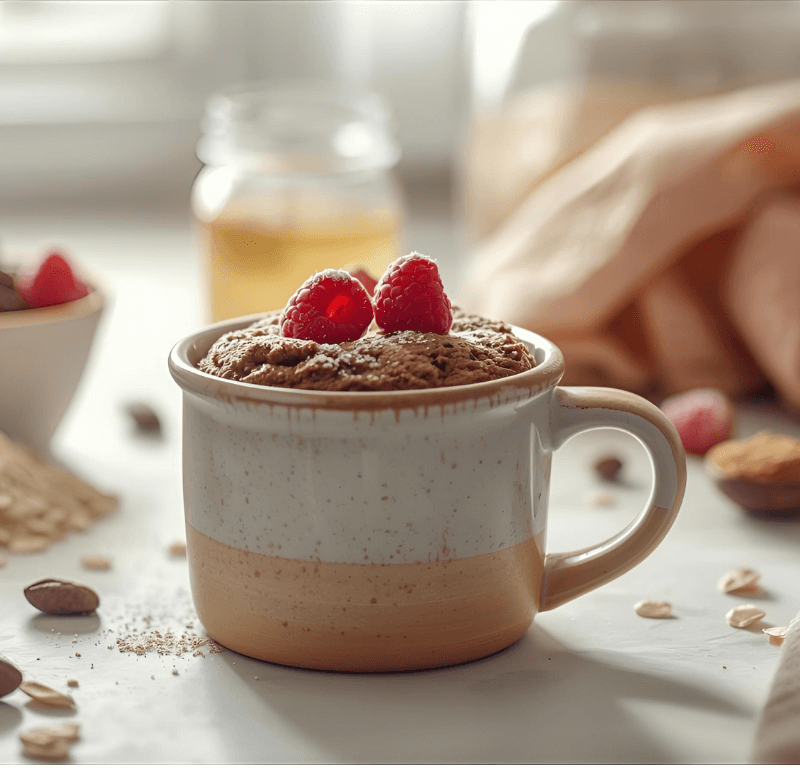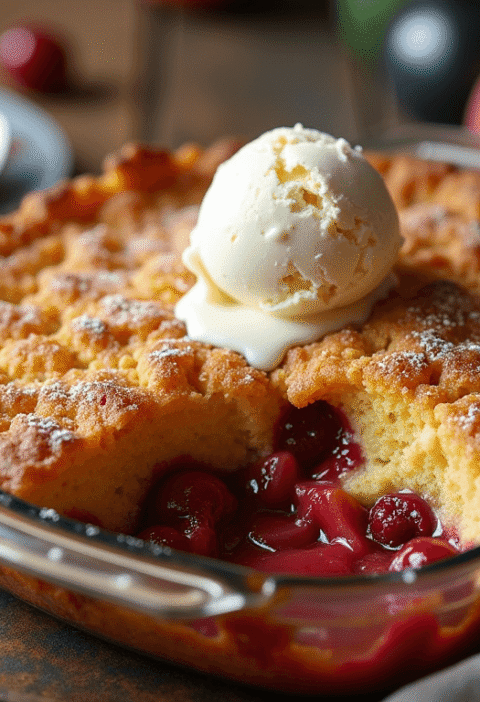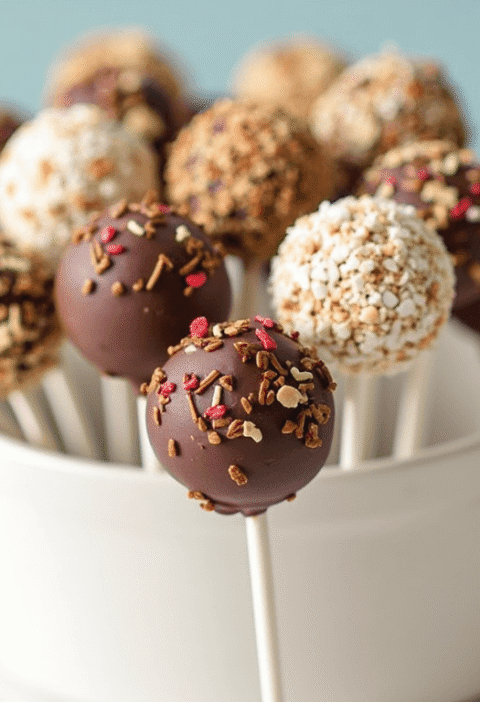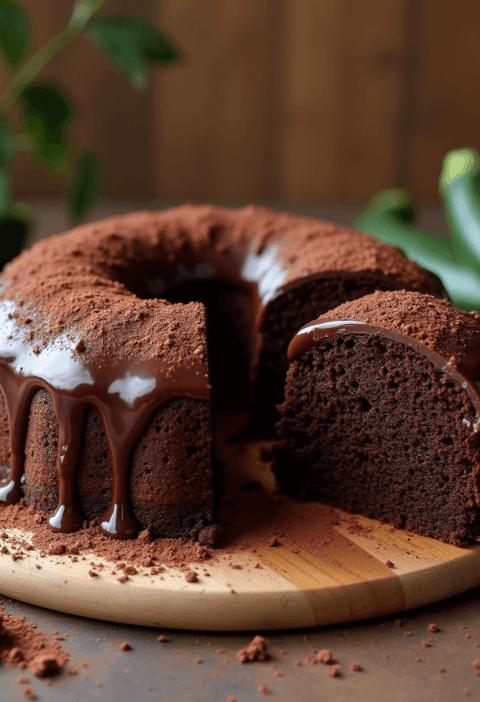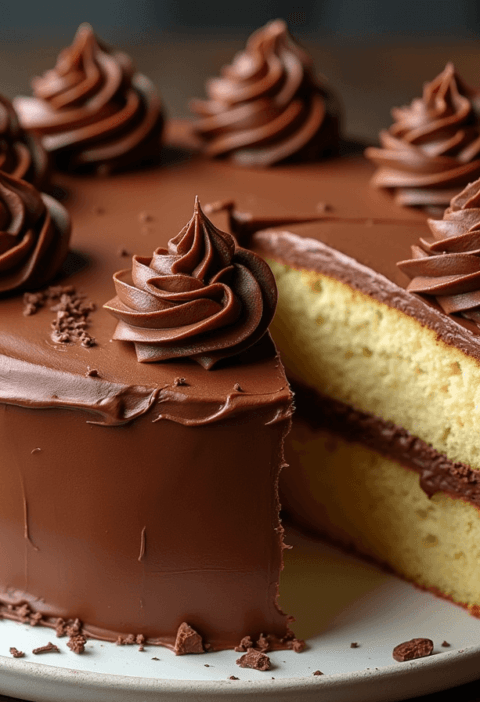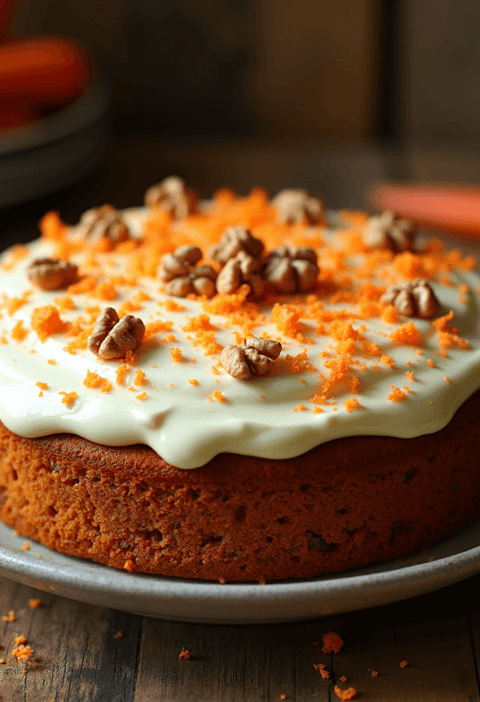What if we told you that craving-satisfying, nutritious desserts could materialize in your microwave in less time than it takes to preheat your oven? According to recent consumer data, 68% of people abandon their dessert plans due to time constraints and complicated recipes, yet microwave mug cakes take just 4 minutes from start to finish. These healthy mug cake recipes are revolutionizing the way we think about quick desserts, proving that convenience doesn’t have to compromise nutrition or taste.
Gone are the days when microwave desserts meant rubbery, artificial-tasting disappointments. Today’s healthy mug cake recipes harness the power of whole food ingredients, natural sweeteners, and smart substitutions to create single-serving treats that are portion-controlled, nutritionally balanced, and absolutely delicious. Whether you’re battling a late-night chocolate craving, need a quick breakfast solution, or want to impress guests with individual desserts, these four versatile recipes deliver every time.
In this comprehensive guide, we’ll walk you through four foolproof healthy mug cake recipes: Classic Chocolate Protein, Vanilla Cinnamon Swirl, Peanut Butter Banana, and Lemon Blueberry Burst. Each recipe takes under 4 minutes total, requires minimal cleanup, and can be customized to accommodate various dietary preferences. Let’s transform your microwave from a reheating appliance into your new favorite baking tool.
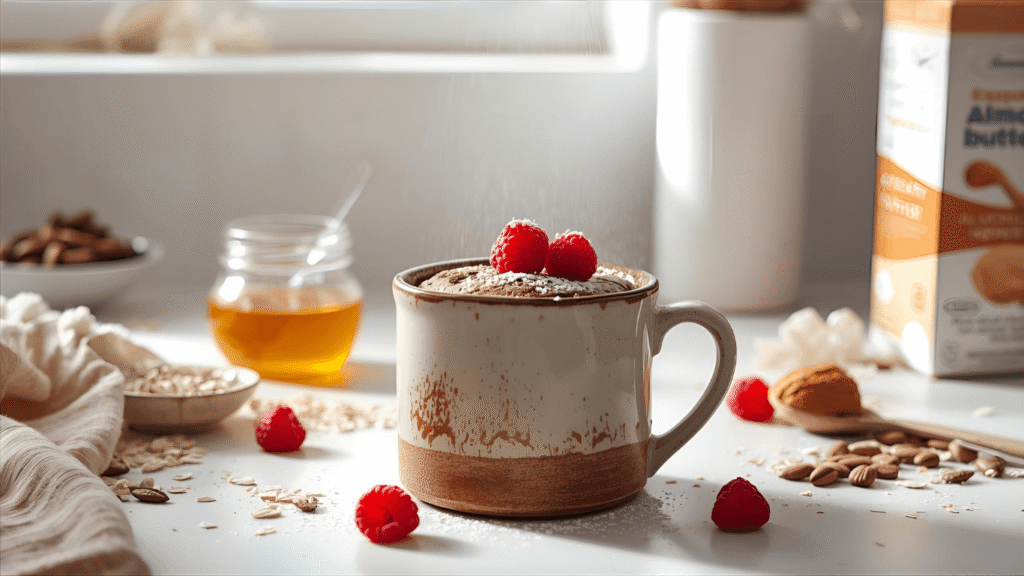
Ingredients List
Recipe 1: Classic Chocolate Protein Mug Cake
Makes: 1 serving
- 3 tablespoons oat flour (or 4 tablespoons rolled oats, ground)
- Provides complex carbohydrates and a hearty, satisfying base
- 1 tablespoon unsweetened cocoa powder (Dutch-processed for richer flavor)
- Delivers deep chocolate intensity and antioxidants
- 1 scoop chocolate protein powder (approximately 25g)
- Boosts protein to 20g+ per serving
- ½ teaspoon baking powder (aluminum-free)
- Pinch of sea salt (enhances chocolate flavor)
- 3 tablespoons unsweetened almond milk (or milk of choice)
- 1 tablespoon maple syrup or honey
- ½ teaspoon vanilla extract
- 1 tablespoon dark chocolate chips (optional, for molten center)
Substitutions:
- Protein powder → 2 tablespoons almond flour + 1 tablespoon coconut flour
- Almond milk → regular milk, oat milk, or coconut milk
- Maple syrup → stevia drops (3-4), monk fruit sweetener, or mashed banana
Recipe 2: Vanilla Cinnamon Swirl Mug Cake
Makes: 1 serving
- 4 tablespoons almond flour (finely ground)
- Creates tender, moist crumb with healthy fats
- 1 tablespoon coconut flour (absorbs moisture perfectly)
- ½ teaspoon baking powder
- ½ teaspoon ground cinnamon, plus extra for swirl
- 1 large egg (or flax egg: 1 tablespoon ground flaxseed + 2.5 tablespoons water)
- 2 tablespoons Greek yogurt (full-fat for richness)
- 1 tablespoon honey or maple syrup
- ½ teaspoon vanilla extract
- 1 teaspoon melted coconut oil or butter
Cinnamon Swirl:
- ½ teaspoon honey mixed with ¼ teaspoon cinnamon
Recipe 3: Peanut Butter Banana Mug Cake
Makes: 1 serving
- 3 tablespoons whole wheat flour (or gluten-free all-purpose)
- Adds fiber and nutty flavor
- 2 tablespoons natural peanut butter (creamy, no sugar added)
- The star ingredient providing protein and rich flavor
- ½ ripe banana, mashed until smooth (about 3 tablespoons)
- Natural sweetener and moisture source
- 1 tablespoon milk of choice
- 1 teaspoon honey (optional, banana may provide enough sweetness)
- ¼ teaspoon baking powder
- ¼ teaspoon vanilla extract
- Pinch of salt
- 1 teaspoon mini chocolate chips (optional topping)
Substitutions:
- Peanut butter → almond butter, cashew butter, or sunflower seed butter (nut-free)
- Banana → ¼ cup unsweetened applesauce
Recipe 4: Lemon Blueberry Burst Mug Cake
Makes: 1 serving
- 3 tablespoons almond flour
- 1 tablespoon coconut flour
- ½ teaspoon baking powder
- 1 large egg
- 1 tablespoon honey or agave nectar
- 1 tablespoon fresh lemon juice
- 1 teaspoon lemon zest (from ½ lemon)
- ½ teaspoon vanilla extract
- 2 tablespoons fresh or frozen blueberries
- Bursting with antioxidants and natural sweetness
- Pinch of salt
Flavor Boost:
- ¼ teaspoon poppy seeds for classic lemon-poppy appeal
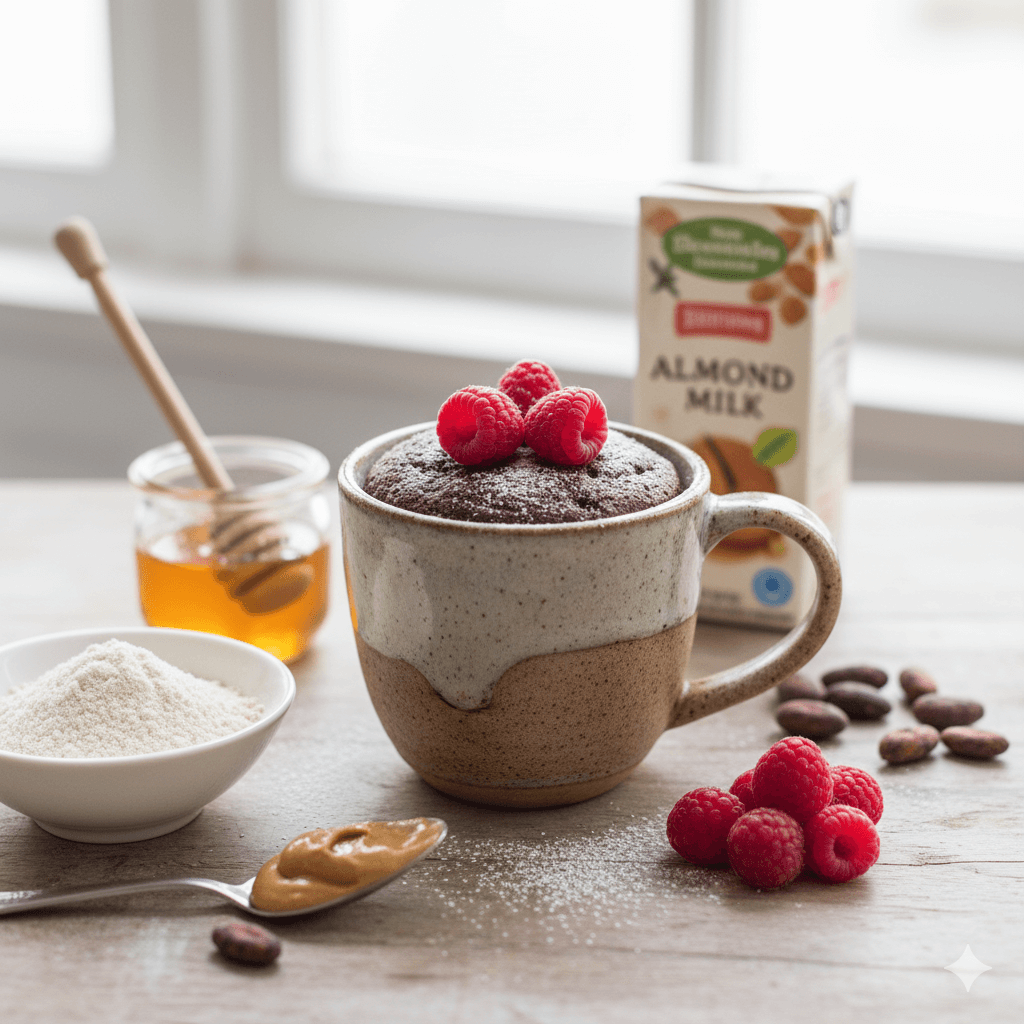
Timing
Individual Recipe Timing:
Recipe 1 (Chocolate Protein):
- Prep Time: 2 minutes
- Microwave Time: 60-90 seconds
- Cooling Time: 30 seconds
- Total Time: 3-4 minutes
Recipe 2 (Vanilla Cinnamon):
- Prep Time: 2 minutes
- Microwave Time: 60-75 seconds
- Cooling Time: 30 seconds
- Total Time: 3.5-4 minutes
Recipe 3 (Peanut Butter Banana):
- Prep Time: 2 minutes (includes mashing banana)
- Microwave Time: 75-90 seconds
- Cooling Time: 30 seconds
- Total Time: 3.5-4 minutes
Recipe 4 (Lemon Blueberry):
- Prep Time: 2.5 minutes (includes zesting lemon)
- Microwave Time: 60-80 seconds
- Cooling Time: 30 seconds
- Total Time: 4 minutes
Time Efficiency Comparison:
These healthy mug cake recipes take 95% less time than traditional oven-baked cakes! Where a conventional cake requires 15-20 minutes of prep, 25-35 minutes of baking, and 30+ minutes of cooling (70+ minutes total), these microwave marvels deliver satisfaction in under 4 minutes start to finish.
Batch Preparation Tip: Pre-measure dry ingredients for each recipe into small jars or containers. Label and store in your pantry for grab-and-go convenience. When a craving hits, simply add wet ingredients and microwave—cutting prep time to under 60 seconds!
Step-by-Step Instructions
Universal Preparation
Step 1: Choose Your Mug Wisely
Select a microwave-safe mug that holds at least 12 ounces (1.5 cups). The batter will rise significantly, potentially doubling in volume, so adequate space prevents overflow disasters. Ceramic or glass mugs work best—avoid metal or mugs with metallic trim.
Pro Tip: Lightly grease your mug with coconut oil or cooking spray for easy release, especially important for egg-based recipes.
Recipe 1: Classic Chocolate Protein Mug Cake
Step 2: Mix Dry Ingredients
In your chosen mug, combine oat flour, cocoa powder, protein powder, baking powder, and salt. Use a fork to whisk thoroughly, breaking up any clumps, especially in the protein powder. This ensures even distribution and prevents powder pockets in your finished cake.
Texture Insight: Whisking for 15-20 seconds creates a lighter, more uniform final product.
Step 3: Add Wet Ingredients
Pour in almond milk, maple syrup, and vanilla extract. Stir with your fork until completely smooth, scraping the bottom and sides of the mug. The batter should be thick but pourable, similar to brownie batter. If too thick, add an extra teaspoon of milk.
Secret Technique: If adding chocolate chips for a molten center, place them in the middle of the batter after mixing, pushing them down slightly so they’re suspended in the center.
Step 4: Microwave to Perfection
Microwave on high power for 60 seconds initially. Check the cake—the top should look set but slightly moist. If needed, continue in 15-second increments until the center is just set but still jiggly. Total time typically ranges from 60-90 seconds depending on your microwave wattage.
Critical Warning: Overcooking creates a rubbery, dry texture. When in doubt, undercook slightly—the cake continues to cook via residual heat for 20-30 seconds after removal.
Step 5: Cool and Enjoy
Let the cake cool for 30 seconds before diving in. The mug will be hot! For enhanced experience, top with Greek yogurt, fresh berries, or a drizzle of nut butter.
Recipe 2: Vanilla Cinnamon Swirl
Step 2: Prepare Cinnamon Swirl
In a small dish, mix ½ teaspoon honey with ¼ teaspoon cinnamon until smooth. Set aside—this creates your flavor spiral.
Step 3: Combine Dry Ingredients
In your mug, whisk together almond flour, coconut flour, baking powder, and cinnamon until no lumps remain. Coconut flour is particularly prone to clumping, so be thorough.
Step 4: Add Wet Mixture
Crack the egg into the mug with dry ingredients. Add Greek yogurt, honey, vanilla, and melted coconut oil. Stir vigorously with a fork for 30-40 seconds until completely smooth and creamy.
Step 5: Create the Swirl
Pour your prepared cinnamon-honey mixture on top of the batter. Using a toothpick or knife tip, swirl it through the batter in a figure-eight motion, creating beautiful marbled patterns that look as good as they taste.
Step 6: Microwave
Cook on high for 60-75 seconds. The top should spring back when lightly touched. Allow to cool for 30 seconds.
Presentation Tip: Dust the top with extra cinnamon or a pinch of powdered erythritol for café-worthy presentation.
Recipe 3: Peanut Butter Banana
Step 2: Mash and Mix
Mash your banana half directly in the mug using a fork until smooth with minimal lumps. Add peanut butter and stir until combined—the mixture will be thick and sticky.
Ingredient Chemistry: The natural oils in peanut butter create incredible moisture, while banana adds binding properties and natural sweetness.
Step 3: Complete the Batter
Add whole wheat flour, milk, honey (if using), baking powder, vanilla, and salt. Stir thoroughly until no flour streaks remain. The batter will be thicker than other recipes due to the peanut butter.
Step 4: Add Toppings
If using chocolate chips, sprinkle them on top of the batter. They’ll create a delightful contrast to the peanut butter-banana base.
Step 5: Microwave and Cool
Microwave for 75-90 seconds. This recipe requires slightly longer cooking due to the density of peanut butter. The center should be set but still soft. Cool for 30 seconds before eating.
Serving Suggestion: Top with sliced banana, a drizzle of honey, or extra peanut butter for decadent indulgence.
Recipe 4: Lemon Blueberry Burst
Step 2: Zest and Juice
Zest your lemon directly into the mug using a microplane or fine grater, capturing those aromatic oils. Juice the lemon half and set aside.
Flavor Maximization: Lemon zest contains exponentially more flavor compounds than juice alone—don’t skip this step!
Step 3: Mix Dry Base
Add almond flour, coconut flour, baking powder, and salt to the mug with the lemon zest. Whisk to combine.
Step 4: Incorporate Wet Ingredients
Crack the egg into the mug. Add honey, lemon juice, and vanilla. Stir until completely smooth and uniform.
Step 5: Fold in Blueberries
Gently fold in the blueberries using a spoon. If using frozen berries, don’t thaw them—they work perfectly frozen and create beautiful purple swirls as they cook.
Berry Distribution Tip: Reserve 3-4 berries to place on top for visual appeal.
Step 6: Microwave
Cook for 60-80 seconds. The berries will bubble and release their juices, creating pockets of fruity goodness. Cool for 30 seconds.
Finishing Touch: Drizzle with a simple lemon glaze (1 tablespoon lemon juice + 2 tablespoons powdered sweetener) or top with coconut whipped cream.
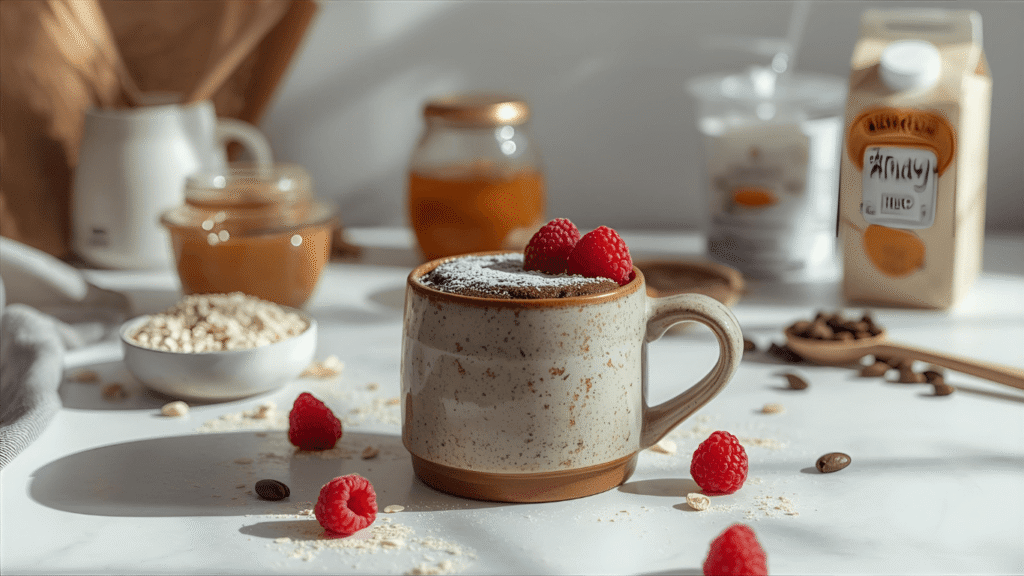
Love cake? 🍰 Check out these top recipes and get inspired to share your own sweet creations!
How To Make Cake Pops: 5 Easy Steps For Beginners
Cake Pop Magic: How 3 Ingredients Make Them Amazing
How To Make The Perfect Red Velvet Cake In 5 Steps
Banana Bread Recipe: 5-Ingredient Magic For Quick & Easy Baking
Pineapple Upside Down Cake: How To Make It In 6 Simple Steps
Nutritional Information
Recipe 1: Classic Chocolate Protein Mug Cake
Per Serving:
- Calories: 245 kcal
- Protein: 22g (44% DV) – Excellent post-workout recovery
- Total Fat: 8g (10% DV)
- Saturated Fat: 2g
- Total Carbohydrates: 26g (9% DV)
- Dietary Fiber: 5g (18% DV)
- Sugars: 10g (from maple syrup and milk)
- Net Carbs: 21g
- Sodium: 220mg (10% DV)
- Potassium: 285mg (6% DV)
- Iron: 2.5mg (14% DV)
- Magnesium: 95mg (23% DV)
Nutritional Highlights: High protein content supports muscle maintenance and satiety. Cocoa provides flavonoids linked to cardiovascular health.
Recipe 2: Vanilla Cinnamon Swirl Mug Cake
Per Serving:
- Calories: 285 kcal
- Protein: 10g (20% DV)
- Total Fat: 18g (23% DV)
- Monounsaturated Fat: 11g (heart-healthy)
- Total Carbohydrates: 22g (8% DV)
- Dietary Fiber: 6g (21% DV)
- Sugars: 13g
- Net Carbs: 16g
- Vitamin E: 6mg (40% DV)
- Calcium: 180mg (14% DV)
- Magnesium: 85mg (20% DV)
Nutritional Highlights: Almond flour delivers vitamin E, while Greek yogurt provides probiotics for gut health. Cinnamon helps regulate blood sugar levels.
Recipe 3: Peanut Butter Banana Mug Cake
Per Serving:
- Calories: 305 kcal
- Protein: 11g (22% DV)
- Total Fat: 16g (21% DV)
- Monounsaturated Fat: 8g
- Total Carbohydrates: 33g (12% DV)
- Dietary Fiber: 5g (18% DV)
- Sugars: 14g (naturally occurring)
- Net Carbs: 28g
- Potassium: 425mg (9% DV)
- Vitamin B6: 0.3mg (18% DV)
- Magnesium: 70mg (17% DV)
Nutritional Highlights: Excellent pre-workout energy source. Banana provides quick-digesting carbs while peanut butter offers sustained energy from healthy fats.
Recipe 4: Lemon Blueberry Burst Mug Cake
Per Serving:
- Calories: 255 kcal
- Protein: 9g (18% DV)
- Total Fat: 15g (19% DV)
- Total Carbohydrates: 24g (9% DV)
- Dietary Fiber: 6g (21% DV)
- Sugars: 16g
- Net Carbs: 18g
- Vitamin C: 12mg (13% DV)
- Vitamin E: 5mg (33% DV)
- Antioxidants: Blueberries rank among top 20 antioxidant foods
Nutritional Highlights: Blueberries provide anthocyanins for cognitive function. Lemon offers vitamin C for immune support.
Comparative Analysis: These healthy mug cake recipes contain 40-60% fewer calories than traditional cake slices, 3-4x more protein, and 70% less sugar while maintaining indulgent taste and satisfaction.
Healthier Alternatives for the Recipe
Sugar-Free Adaptations:
Replace honey or maple syrup with:
- Stevia drops (3-5 drops per recipe) – zero calories, very sweet
- Monk fruit sweetener (1-2 tablespoons) – natural, no bitter aftertaste
- Erythritol (2 tablespoons) – minimal glycemic impact
- Mashed banana or applesauce (2-3 tablespoons) – adds natural sweetness plus moisture
Protein Boosters:
Increase protein content by:
- Adding 1 scoop of unflavored collagen peptides (10g extra protein)
- Mixing in 2 tablespoons of Greek yogurt (3g protein)
- Using protein powder in all recipes (substitute 1 tablespoon flour)
- Incorporating 1 tablespoon hemp hearts (3g protein, omega-3s)
Lower Carb Versions:
For keto-friendly or low-carb diets:
- Replace all flours with almond flour or coconut flour (reduce liquid by half when using coconut flour)
- Use erythritol or stevia instead of honey/syrup
- Net carbs drop to 5-8g per serving
Vegan Transformations:
- Egg replacements: 1 flax egg (1 tablespoon ground flaxseed + 2.5 tablespoons water, let sit 5 minutes) or 2 tablespoons unsweetened applesauce
- Dairy alternatives: Plant-based yogurt, nut milks
- Honey substitute: Maple syrup or agave nectar
Allergy-Friendly Options:
- Nut-free: Replace almond flour with oat flour or sunflower seed flour
- Gluten-free: Use certified gluten-free oats or all recipes using almond/coconut flour
- Dairy-free: Substitute all milk with non-dairy alternatives
Superfood Additions:
Boost nutrition without compromising taste:
- 1 teaspoon chia seeds – omega-3s, fiber
- 1 teaspoon ground flaxseed – lignans, healthy fats
- ½ teaspoon spirulina or matcha powder (in vanilla cake) – antioxidants
- 1 tablespoon grated zucchini (in chocolate cake) – vegetables, moisture
- 1 teaspoon maca powder – adaptogenic properties
Flavor Variations:
Transform basic recipes with add-ins:
- Spice blends: Pumpkin spice, chai spice, cardamom
- Extracts: Almond, coconut, peppermint, orange
- Mix-ins: Shredded coconut, dried fruit, nuts, seeds
- Toppings: Fresh fruit, nut butter drizzle, coconut cream, Greek yogurt

Serving Suggestions
Breakfast Transformations:
- Morning Power Bowl: Crumble your cooled mug cake over Greek yogurt, add fresh berries, granola, and a drizzle of honey. The warm cake melts into cold yogurt for textural contrast.
- Protein Pancake Alternative: Make your mug cake slightly flatter (use a wider, shallower bowl) and top with sliced bananas, almond butter, and a sprinkle of cinnamon for a quick breakfast that beats cereal.
Dessert Elevations:
- À La Mode Experience: Top your warm mug cake with a small scoop of vanilla ice cream, frozen yogurt, or nice cream (frozen banana blended until creamy). The temperature contrast is magical.
- Lava Cake Illusion: Undercook your chocolate mug cake by 10-15 seconds, leaving the center molten. Serve with fresh raspberries and a dusting of powdered sweetener.
- Parfait Presentation: Let the cake cool completely, cube it, and layer in a glass with whipped coconut cream and fresh fruit for an elegant dessert presentation.
Snack Solutions:
- Pre-Workout Energy: The peanut butter banana mug cake 30-45 minutes before exercise provides sustained energy from complex carbs and healthy fats.
- Post-Workout Recovery: The chocolate protein version within 30 minutes post-workout delivers muscle-repairing protein in an enjoyable format.
- Afternoon Pick-Me-Up: Pair any mug cake with your afternoon coffee or tea for a satisfying 3 PM energy boost without the blood sugar crash.
Social Serving:
- Individual Desserts for Dinner Parties: Make multiple mug cakes simultaneously in various flavors, allowing guests to customize toppings from a DIY bar featuring fresh fruit, whipped cream, nuts, and chocolate sauce.
- Date Night Dessert: Serve two complementary flavors (chocolate and lemon blueberry) with two spoons for a romantic, shareable experience.
Topping Bar Ideas:
Create a personalization station with:
- Fresh berries (strawberries, blueberries, raspberries)
- Sliced bananas or peaches
- Nut butters (almond, peanut, cashew)
- Chocolate or caramel sauce
- Whipped cream or coconut cream
- Chopped nuts (walnuts, pecans, almonds)
- Shredded coconut
- Chia seeds or hemp hearts
- Greek yogurt
- Honey or maple syrup drizzle
Common Mistakes to Avoid
Mistake #1: Overfilling the Mug
The Problem: Filling your mug more than halfway leads to volcanic overflow, creating a mess in your microwave and reducing the cake volume.
The Solution: Never fill beyond the halfway point. Research shows that mug cake batter expands 80-100% during cooking. Choose a 12-16 ounce mug for standard recipes to provide adequate rise space.
Mistake #2: Incorrect Microwave Power Settings
The Problem: Using power settings below high (100%) results in uneven cooking—dry edges with a raw center. Conversely, some high-wattage microwaves (1200W+) can overcook quickly.
The Solution: Always use full power (high/100%). If your microwave exceeds 1100 watts, reduce cooking time by 15-20 seconds. Start with less time—you can always add more, but you can’t undo overcooking.
Wattage Guide:
- 700-800W: 90-120 seconds
- 900-1000W: 75-90 seconds
- 1100W+: 60-75 seconds
Mistake #3: Not Greasing the Mug
The Problem: Even in non-stick mugs, egg-based batters can adhere stubbornly, making it difficult to enjoy your cake and nearly impossible to clean.
The Solution: Lightly spray or brush the mug interior with coconut oil, butter, or cooking spray before adding batter. This 5-second step saves frustration and preserves your cake’s presentation.
Mistake #4: Overmixing the Batter
The Problem: While mug cakes are forgiving, excessive stirring can deflate incorporated air, resulting in dense, heavy texture.
The Solution: Mix just until ingredients are combined—30-40 seconds of stirring is sufficient. Small lumps are acceptable and will disappear during cooking.
Mistake #5: Using the Wrong Flour Ratios
The Problem: Coconut flour absorbs 3-4x more liquid than other flours. Direct substitutions create either soup or concrete.
The Solution: When substituting coconut flour, use only ¼ the amount of other flours and increase liquid by 2 tablespoons. Conversely, when replacing coconut flour with almond or oat flour, quadruple the amount and reduce liquid.
Mistake #6: Inconsistent Ingredient Temperatures
The Problem: Cold ingredients (especially eggs and milk from the refrigerator) don’t incorporate smoothly, creating an uneven texture with pockets of unmixed ingredients.
The Solution: Use room-temperature ingredients when possible, or warm cold milk for 10 seconds in the microwave before adding to batter.
Mistake #7: Judging Doneness by Time Alone
The Problem: Microwave wattages vary significantly. Following timing exactly without visual assessment leads to over or undercooking.
The Solution: Use time as a guideline, but judge doneness visually. The top should look set but slightly moist—not wet or shiny. A toothpick inserted should come out with a few moist crumbs, not liquid batter.
Visual Doneness Cues:
- Top surface no longer looks wet or glossy
- Edges pull slightly away from mug sides
- Center springs back when gently pressed
- Cake has risen noticeably
Mistake #8: Eating Too Soon
The Problem: The cake and mug are extremely hot immediately after microwaving. Burning your mouth or hands ruins the experience.
The Solution: Wait 30-60 seconds before eating. This brief rest also allows the texture to set properly—mug cakes continue to cook slightly via residual heat.
Storing Tips for the Recipe
Immediate Consumption Best Practice:
Mug cakes are designed for immediate enjoyment and taste best when fresh from the microwave. However, life happens, and sometimes you need to save your creation for later.
Short-Term Storage (Same Day):
If you need to store your mug cake for a few hours:
- Allow to cool completely at room temperature (10-15 minutes)
- Cover the mug with plastic wrap or transfer to an airtight container
- Store at room temperature for up to 4 hours
- Reheat for 15-20 seconds in microwave before eating
Refrigerator Storage (1-3 Days):
For longer storage:
- Cool completely and transfer to an airtight container
- Refrigerate for up to 3 days
- Texture becomes denser and more compact (similar to refrigerated regular cake)
- Reheat for 20-30 seconds in microwave, or enjoy cold
Texture Recovery Tip: If your refrigerated mug cake seems dry, brush lightly with milk or almond milk before reheating. This rehydrates the exterior.
Freezer Storage (Up to 2 Months):
Yes, you can freeze mug cakes!
- Cool completely and wrap tightly in plastic wrap
- Place in a freezer-safe bag or container
- Label with recipe name and date
- Freeze for up to 2 months
- Thaw overnight in refrigerator or microwave for 30-45 seconds from frozen
Pre-Mixing Dry Ingredients:
The ultimate meal prep hack:
- Measure all dry ingredients for each recipe into small jars, bags, or containers
- Label clearly with recipe name and wet ingredients needed
- Store in pantry for up to 3 months
- When ready to bake, just add wet ingredients and microwave
Portioning System: Use small mason jars (4-8 oz) to pre-portion dry mixes. When a craving hits, add wet ingredients directly to the jar, stir, and microwave (ensure jar is microwave-safe).
Ingredient Freshness Guidelines:
- Baking powder: Loses potency after 6 months; test by dropping ½ teaspoon in water—it should fizz vigorously
- Flours: Store almond and coconut flour in the refrigerator or freezer to prevent rancidity (high fat content)
- Oats: Keep in airtight container for up to 6 months at room temperature
Leftover Batter:
Don’t have batter leftover from these single-serving recipes, but if you double a recipe:
- Cover and refrigerate excess batter for up to 24 hours
- Stir well before microwaving (batter may thicken; add 1 teaspoon liquid if needed)
- Baking powder begins working immediately, so refrigerated batter may not rise as dramatically
Conclusion
These four healthy mug cake recipes prove that nutritious desserts can be quick, convenient, and absolutely delicious. Taking just 3-4 minutes each from prep to plate, they deliver protein-rich, lower-sugar satisfaction without refined ingredients or complicated techniques. Whether you crave chocolate, vanilla, peanut butter, or fruity flavors, these single-serving microwave cakes accommodate busy lifestyles, dietary restrictions, and spontaneous sweet tooth emergencies without compromise.
Ready to revolutionize your dessert game? Choose your favorite flavor and experience the magic of microwave baking today! We’re eager to hear about your creations—which recipe became your go-to? Did you try any creative variations or toppings? Share your results, photos, and innovative twists in the review section below or leave a comment on our blog. Your experience inspires our community! Don’t forget to subscribe for more quick, healthy recipes that make nutritious eating effortless and enjoyable. Happy microwaving!
FAQs
Q: Can I make mug cakes without a microwave?
A: Absolutely! Preheat your oven to 350°F (175°C) and bake in an oven-safe ramekin or small baking dish for 12-15 minutes. The texture will be slightly different—more similar to traditional cake and less “mug cake” specific, but equally delicious. You can also use a toaster oven with similar timing.
Q: Why did my mug cake turn out rubbery?
A: Rubbery texture results from overcooking. Microwave power varies significantly between models, so your cake may need less time than indicated. Start with the minimum suggested time and add 10-second increments if needed. The cake should look slightly moist on top when done—it firms up during the cooling period.
Q: Can I make these recipes egg-free?
A: Yes! Replace each egg with a flax egg (1 tablespoon ground flaxseed mixed with 2.5 tablespoons water, let sit 5 minutes) or 2 tablespoons of unsweetened applesauce. Note that egg-free versions will be slightly denser and less fluffy, but still delicious. The banana-based recipe works particularly well egg-free.
Q: Is it safe to eat mug cake batter raw?
A: If using raw eggs, no—consume only after cooking due to salmonella risk. However, you can make “edible” batter versions by using pasteurized eggs or omitting eggs entirely (using egg substitutes). Heat-treated flour is also recommended if you plan to eat batter uncooked, as raw flour can harbor bacteria.
Q: Can I double the recipe in one mug?
A: We don’t recommend it—doubled recipes overflow even in large mugs and cook unevenly. Instead, make two separate mug cakes simultaneously. Most microwaves accommodate two mugs side-by-side, doubling your output without overflow risk. You may need to add 15-20 seconds to cooking time when microwaving multiple mugs together.
Q: Why did my mug cake explode in the microwave?
A: Explosions occur when: (1) the mug is too full (never exceed halfway point), (2) you forgot to include baking powder or used too much (it expands rapidly), or (3) there’s uneven mixing causing steam pockets. Always ensure adequate rise space and mix thoroughly to prevent this messy mishap.
Q: Are these recipes suitable for kids?
A: Yes! These healthy mug cake recipes are kid-friendly and fun for children to make with supervision. The quick results maintain attention spans, and the single-serving size teaches portion control. Supervise microwave use and mug handling (they get hot!). Many parents report these recipes as successful “cooking” activities that build confidence in young chefs.
